Deep Ground Penetrating Radar (DGPR) identifies seven anomalies across the Sugarloaf Target Area, forming two separate polygons striking over 900m and 500m respectively
Sub-surface DGPR anomalies are interpreted to represent quartz stockworks, sheeted quartz veining and disseminated sulphides plausibly associated with porphyry-style Cu-Au or related styles of mineralisation
DGPR results at Sugarloaf support the previously recognised prospectivity and solidifies the area as drill-ready, noting the interpreted polygons:
-
-
Are located within a distinctive magnetic low feature considered characteristic of a porphyry-style deposit such as the Copper Hill (890koz Au & 310kt Cu)
-
Capture previously announced anomalous rock chips, including the float sample grading 5.19g/t Au and 1.73% Cu
-
Include significant interpreted faults and shears featuring recognised proximal alteration (silica-flooding and jasperoid)
-
Coincident with a previously identified NE-trending linear feature
-
DGPR across the Bell Valley Target Area currently being interpreted and integrated with air core drilling results announced on 22 April 2020; results imminent
-
A total of seven anomalies were identified through the DGPR survey at Sugarloaf. These anomalies occur across multiple survey lines and ultimately form two separate polygons striking over 900m and 500m respectively. With the previously announced high-grade chip result, reporting 5.19g/t gold and 1.73% copper derived within the longer DGPR polygon, the Company considers the DGPR survey has solidified Sugarloaf as a drill-ready target.
Krakatoa’s Executive Chairman, Colin Locke, stated, “We are delighted with the DGPR results that have put the icing on the cake at Sugarloaf by reinforcing its drill readiness. The interpreted sub-surface anomalies appear directly under an appreciable magnetic low where surface rocks of high grade have already been reported. We look forward to sharing the DGPR survey results for Bell Valley with investors as soon as possible.”
-
DGPR Program
Krakatoa contracted Loza Radar Australia (LRA) to undertake a deep ground penetrating radar (DGPR) survey across selected areas at Belgravia to map the sub-surface geology and provide evidence of favourable hosting environments for mineralisation. The survey acquired a total of 21,183m, comprised of 15,373m across 13 lines at Bell Valley and 5,810m across 5 lines at Sugarloaf.
The DGPR survey at the Sugarloaf Target Area was completed across a distinctive magnetic low feature considered as characteristic of a porphyry-style deposit (Figure 1). Identification of the magnetic low followed a reinterpretation of regional aeromagnetic data (announced 9 February 2020). It was confirmed and refined through a later detailed airborne geophysical survey (announced 20 May 2020). The Company notes the critical relationship between the location of mineralisation and the expression of magnetic low features (outlined in orange) with the Copper Hill deposit (890koz Au & 310kt Cu)1 and several additional prospects lying within a discrete magnetic low.

Figure 1: Processed Aeromagnetic Imagery & Interpreted Magnetic Low Target
Features
-
DGPR interpretation results – Sugarloaf
The DGPR interpretation across Sugarloaf has identified seven critical anomalies thought to represent irregular quartz stockworks, sheeted quartz veining and disseminated sulphides plus structurally- controlled quartz veining associated with Late Ordovician porphyry mineralisation styles. A further series of five anomalies correspond with and may be due to the powerline that transects the survey area.
The DGPR profile represents a 2D vertical slice of the sub-surface (Figure 3). Where anomalies share common characteristics, they can be grouped and extrapolated laterally forming cohesive targets. This work has resulted in the identification of 2 separate polygons, respectively, striking over 900m and 500m (Figure 2). The longer polygon coincides with a NE-trending linear (fault/shear), carries alteration minerals known to be associated with porphyry-mineralisation elsewhere (e.g. Cadia) and features economic grade (5.19g/t Au and 1.73% Cu) returned from locally-derived float (previously announced on 14 April 2020).
Figure 2: DPGR survey (white lines) across the Sugarloaf Target Area with composite representation of DGPR anomalies (purple polygons) identified in Figure 3
Within the 2D vertical slices (Figure 3), the thick orange to red-coloured areas represent slabs of Ordovician bedrock. The overlying blue to purple zones represent weathering profiles developed in the underlying bedrock, and the yellow veneer represents the soil profile developed at surface. Dislocations or displacements in signal continuity represent features like faults, quartz veins or both.







Figure 3: DGPR 2D vertical slice of the sub-surface geology with interpretations
-
Working hypothesis: Sugarloaf
The Company considers the economic potential for copper-gold mineralisation associated with a porphyry may lie at depth (>200m); best exemplified in the expression of the magnetic response. The Company also believes that a shallower initial target lies in the high-grade copper-gold veins that may extend towards the surface from a deeper porphyry source; best exemplified in the DGPR, observed mineral alteration and existing geochemistry. Thus Sugarloaf presents the geological characteristics, geochemical signature and geophysical expression of a porphyry copper-gold deposit.
-
DGPR interpretation results – Bell Valley
The DGPR results across the Bell Valley Target Area will be released as soon as processing and interpretation in tandem with geological, structural, drilling and surface geochemical data is complete.
-
Survey Parameters and Background
Ground-penetrating radar (GPR) uses a variable frequency (e.g. 25 to 1,500 MHz) EM pulse transmitted from a radar antenna to probe the earth. The transmitted radar pulses are reflected from various interfaces within the ground, and this return is detected by the radar receiver. It exploits contrasts in electromagnetic properties (dielectric permittivity, electrical conductivity, and magnetic permeability) to define sub-surface structures associated directly or indirectly with the style of mineralisation that the Company is exploring. Reflecting interfaces may be soil horizons, the groundwater surface, soil/rock interfaces, man-made objects, or any other interface possessing a contrast in dielectric properties. The dielectric properties of materials correlate with many of the mechanical and geologic parameters of the materials.
Only Low-Frequency Systems using specific acquisition parameters (6-metre antenna x 25 Mhz) developed by LRA were used on the Company’s prospects. The depth of acquisition was set to 200m but post-processing details were extracted on sections set at 100m and 50m, as part of the “zoom” capability of LRA’s proprietary software.
Each survey was GPS marked per every 25 “shots” and saved as individual waypoints for all survey lines.
DGPR was selected over electrical methods (ground EM and IP) because of its low impact and smaller footprint, ease of setup and rapid data collection, capacity to resolve geology to reasonable depths (~200 vertical metres) and the ability to work mostly year-round. Several of these issues are paramount when exploring in privately held farming country.
-
Working hypothesis: Sugarloaf
The Company considers the economic potential for copper-gold mineralisation associated with a porphyry may lie at depth (>200m); best exemplified in the expression of the magnetic response. The Company also believes that a shallower initial target lies in the high-grade copper-gold veins that may extend towards the surface from a deeper porphyry source; best exemplified in the DGPR, observed mineral alteration and existing geochemistry.
Thus Sugarloaf presents the geological characteristics, geochemical signature and geophysical expression of a porphyry copper-gold deposit.
-
DGPR interpretation results – Bell Valley
The DGPR results across the Bell Valley Target Area will be released as soon as processing and interpretation in tandem with geological, structural, drilling and surface geochemical data is complete.
-
Survey Parameters and Background
Ground-penetrating radar (GPR) uses a variable frequency (e.g. 25 to 1,500 MHz) EM pulse transmitted from a radar antenna to probe the earth. The transmitted radar pulses are reflected from various interfaces within the ground, and this return is detected by the radar receiver. It exploits contrasts in electromagnetic properties (dielectric permittivity, electrical conductivity, and magnetic permeability) to define sub-surface structures associated directly or indirectly with the style of mineralisation that the Company is exploring. Reflecting interfaces may be soil horizons, the groundwater surface, soil/rock interfaces, man-made objects, or any other interface possessing a contrast in dielectric properties. The dielectric properties of materials correlate with many of the mechanical and geologic parameters of the materials.
Only Low-Frequency Systems using specific acquisition parameters (6-metre antenna x 25 Mhz) developed by LRA were used on the Company’s prospects. The depth of acquisition was set to 200m but post-processing details were extracted on sections set at 100m and 50m, as part of the “zoom” capability of LRA’s proprietary software.
Each survey was GPS marked per every 25 “shots” and saved as individual waypoints for all survey lines.
DGPR was selected over electrical methods (ground EM and IP) because of its low impact and smaller footprint, ease of setup and rapid data collection, capacity to resolve geology to reasonable depths (~200 vertical metres) and the ability to work mostly year-round. Several of these issues are paramount when exploring in privately held farming country.
For full announcement of 9th June 2020, please click link below:
https://www.asx.com.au/asxpdf/20200609/pdf/44jgqhb0qv1x0t.pdf


